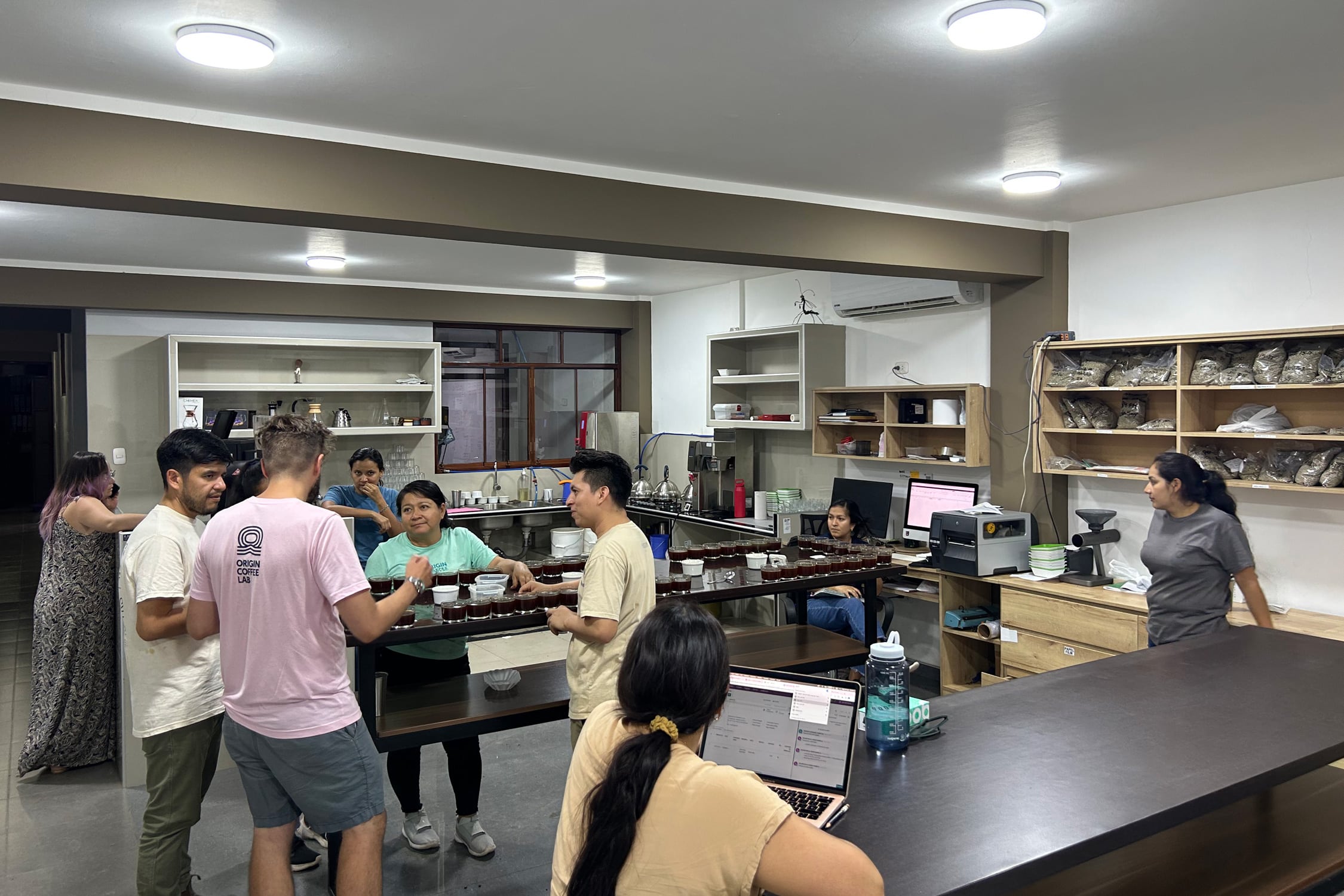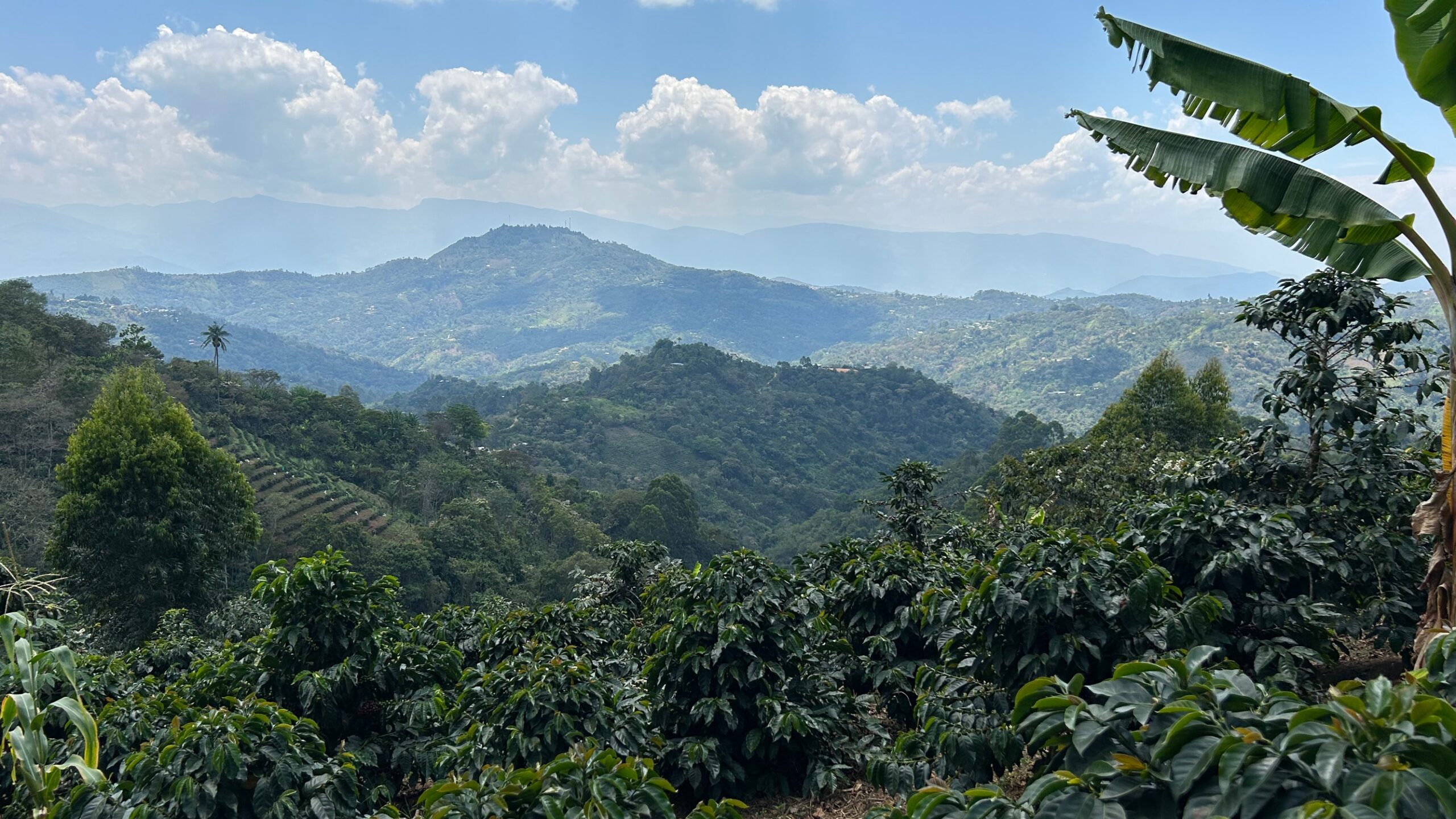The start of Blueprint Coffee purchasing in Peru
Blueprint Coffee first began buying coffee from Peru in 2014 through Cafe Imports. At first, through their relationship with exporter Cenfrocafe and then exporter Lima Coffee. As of this year we still purchased a large lot from Cafe Imports/Lima Coffees. These lots were an assembly of many farmer’s output all grown in Peru’s Cajamarca Region. Cafe Imports provides consistent quality through their sourcing and blending practices.
Even though we did not have unique farm relationships in Peru, we cherished (and cherish) the flavor profiles of Cajamarca. Additionally, the season in which Peruvian coffees are fresh and available for import compliments the seasonality of our sourcing relationships in Northern hemisphere countries like Guatemala and Ethiopia.
The evolution of Blueprint Coffee partnerships in Peru
Blueprint started purchasing additional Peruvian coffees from Atlantic Specialty about 4 years ago, the first being “Gallito” de las Rocas (originally released under the name Estrella Divina). This started our pursuit of finding more specific producer partnerships. Atlantic Specialty aided us in this pursuit by connecting us to their exporting partners, Origin Coffee Lab (OCL). In turn, OCL introduced us to several small group producers in addition to Gallito de Las Rocas. This lead to the purchase of San Ramon last harvest.
These unique offerings are great examples of coffees from the same region of a country with similar varieties that, because of the processing and terroir, present very differently in the cup. This drastic difference in taste characteristic motivated me to finally travel to Peru. My trip was the first origin trip to Peru for Blueprint Coffee. I wanted to see some of the farms from these groups and make a direct connection to their land and to the people, and hopefully hone in on a more direct partnership.
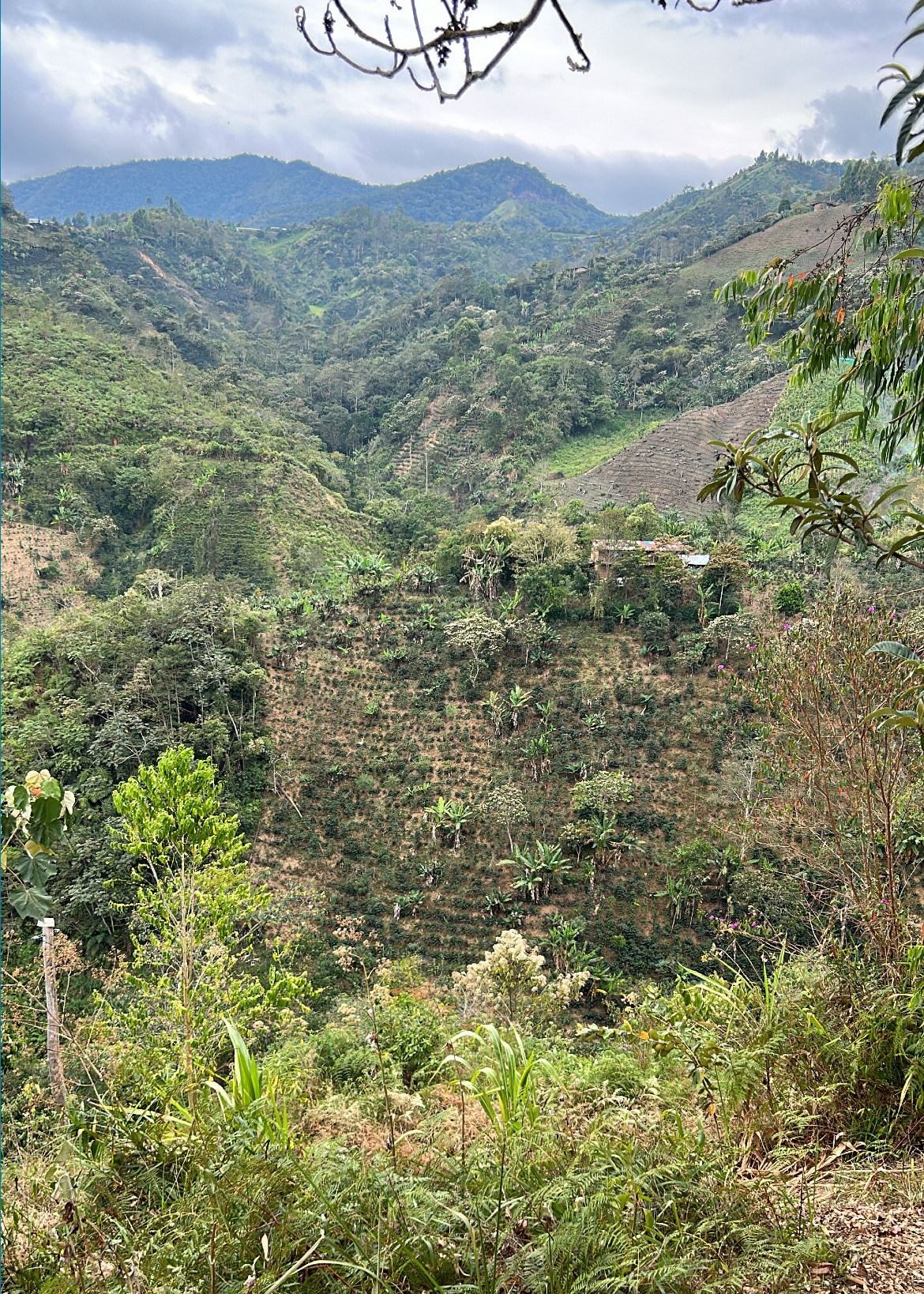
Coffee farms in Cajamarca, Peru are situated on very steep mountainsides.
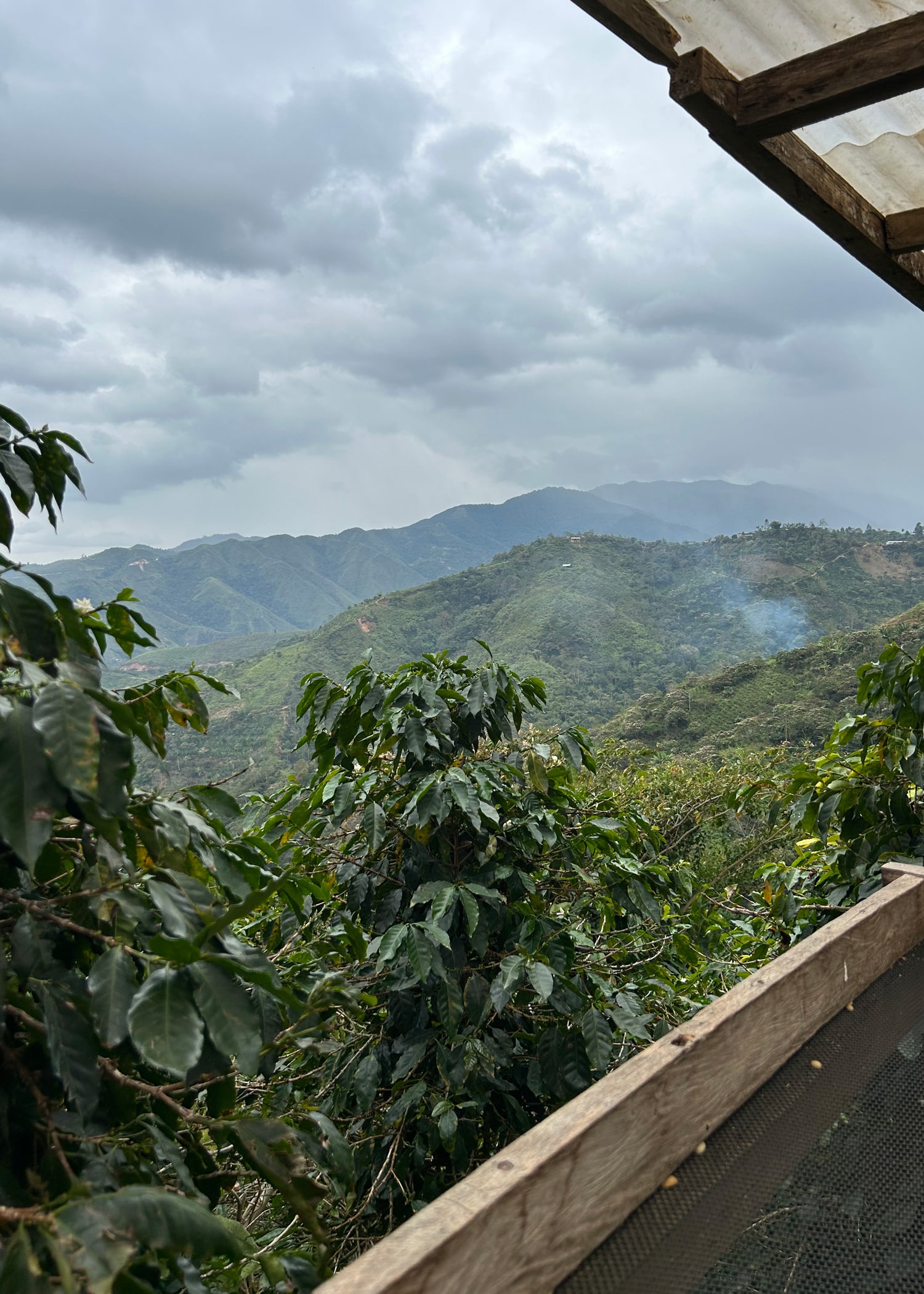
Blueprint Coffee: first trip to Peru (September 2023)
With the success of two seasons of purchasing from Gallito in the rearview, paired with the promise of forming new producer relationships with the San Ramon group, I traveled to Cajamarca in early September. I intended to visit and meet as many of the people involved in these partnerships as I could.
While there, I also observed a number of things that were both similar and also unique to other origins I have visited. The similar things were landscape, farm size, and farm design. The land is reminiscent of Colombia with its stark, drastic mountainsides and quick increases in elevation. This topography creates thousands of microclimates that we often hear about, their effects creating unique terroir on farms.
I observed everything from cloud-covered farms with rainy, wet, and humid air conditions all the way to arid heat and air conditions under full, intense sun. The soil seemed somewhat similar across all farms, as did the steep mountainsides that make picking difficult. Unfortunately, falls while picking often happen, even for the most experienced producers.
It appeared the only form of fertilizer used on the soil is cascara. This is simply the discarded fruit flesh of the coffee cherry that is typically removed from the seed during processing. I’m used to seeing the humid, cloud-covered farms, but I have not seen or cupped great quality coffees from arid farms. These trips, though, often present challenges to preconceived expectations of coffees. The coffees from the arid region were of very good quality and had a nicely developed sweetness throughout.
Lack of infrastructure
The other unique difference I observed in Peru’s coffeelands was the lack of infrastructure. This makes getting coffee not only from the farm to a road challenging, but also from the road to a purchasing station. Compared to Colombia, where the roads may not all be paved but are generally accessible dirt and gravel roads, Peru is at a deficit.
Only one main road traverses Cajamarca’s growing region. From it, getting to a farm is an intense trek that often involves 4-wheel driving along ill-maintained paths, bee-bopping your body all around, until you reach the end of the path where you’re then met with an additional hike of 30-60 minutes. Imaging the path of a farmer during the height of harvest season, I gained new insight into the life that producers lead. This obvious dedication made me further desire to support what they are producing.

Getting to a farm is often an intense trek that often involves 4-wheel driving along ill-maintained paths followed with an additional hike of 30-60 minutes.
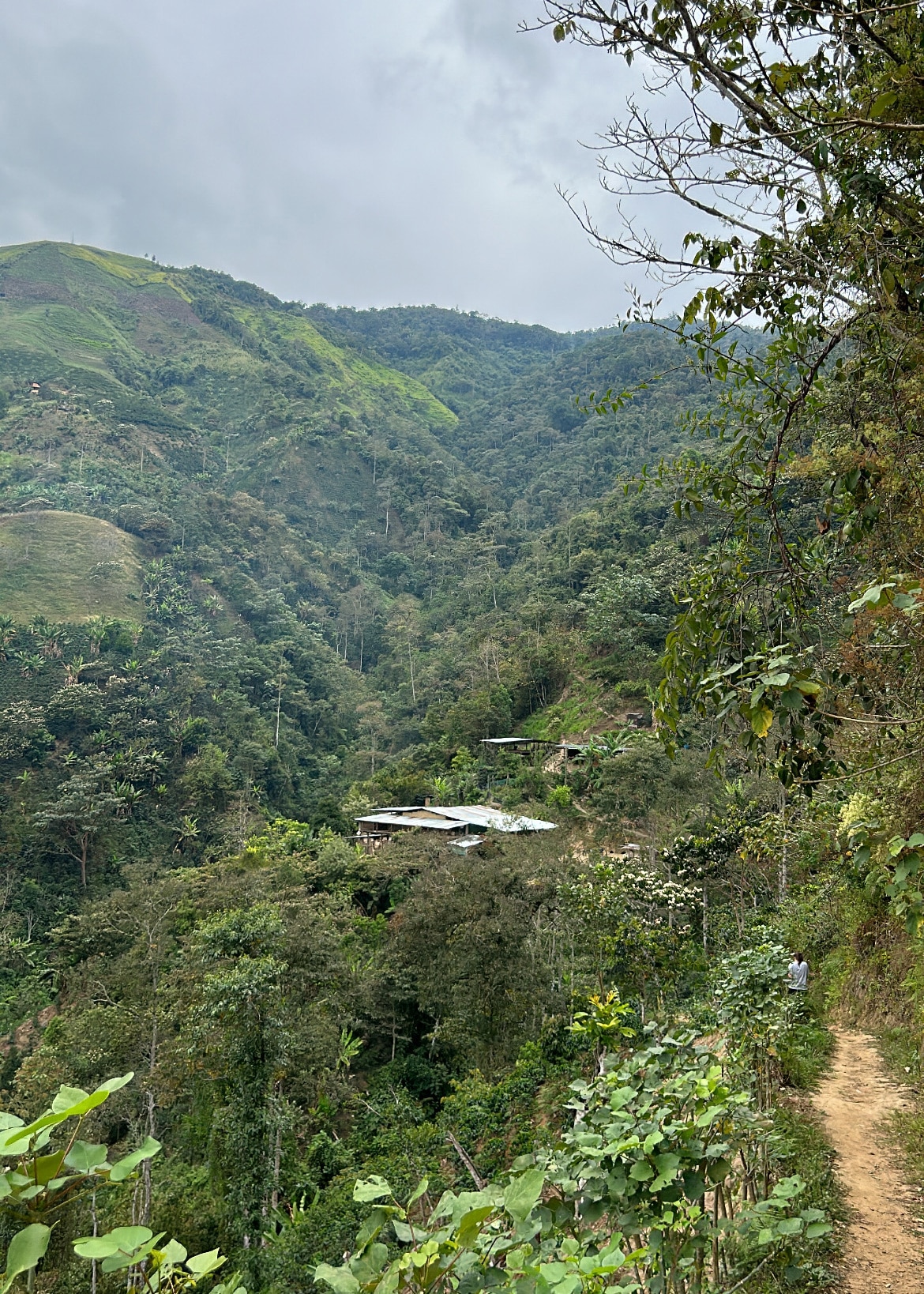
Farm conditions in Peru
When it came to the individual farms, conditions and operations were somewhat similar to other origins I have visited. Each farmer processes their own coffee cherries and then dries the coffee, still in parchment, on their farm. This method has its pluses and minuses. On the plus side, they control coffee processing and drying. On the negative side, if they don’t have education on (or access to) quality farming and processing practices, then they are not protected from detrimental things like phenol, pests, and other common defects in coffee production.
A unique practice I observed in Peru, and have seen some in other Central and South American farms, is the practice of resting fresh-picked coffee cherries in bags before depulping. Additionally, I observed producers putting depulped beans (seeds) in bags for the fermentation process. The reason for these somewhat unique practices differs from farm to farm.
Processing at Gallito and San Ramon
At a few La Coipa farms, part of the Gallito de las Rocas area of producers, they put the cherries in bags (usually Ecotech type) for the start of the fermentation part of the process. The cherry sits overnight in the bags. Then, the next morning, some water is added to the bag of cherries and it sits for an additional 24 hours. After this, the cherries are depulped, rinsed twice, and laid out to dry for about 12 days. This gives the coffee a much fruitier profile.
In the San Ramon area of San Ignacio, the farmers start by picking and sorting coffee cherries. Then, they depulp the cherries and rest the parchment-covered seeds in Ecotech bags for 24-36 hours before rinsing it with water at least once. Often, they rinse more than one time. Finally, they lay the coffee out to dry for 18-20 days. According to one producer in the group, this method mimics the style of Kenyan processing.
I noticed this happening in a few places elsewhere as well. When I asked the reason, the producers said it was due to lack of space. Most have only one processing tank to use, so they utilize bags during the processing to save on space in their tanks for rinsing the final parchment before drying. During peak harvest, there was a bottleneck happening, so some of these processes were accidentally occurring with decent results. So, they began to lean into them more.
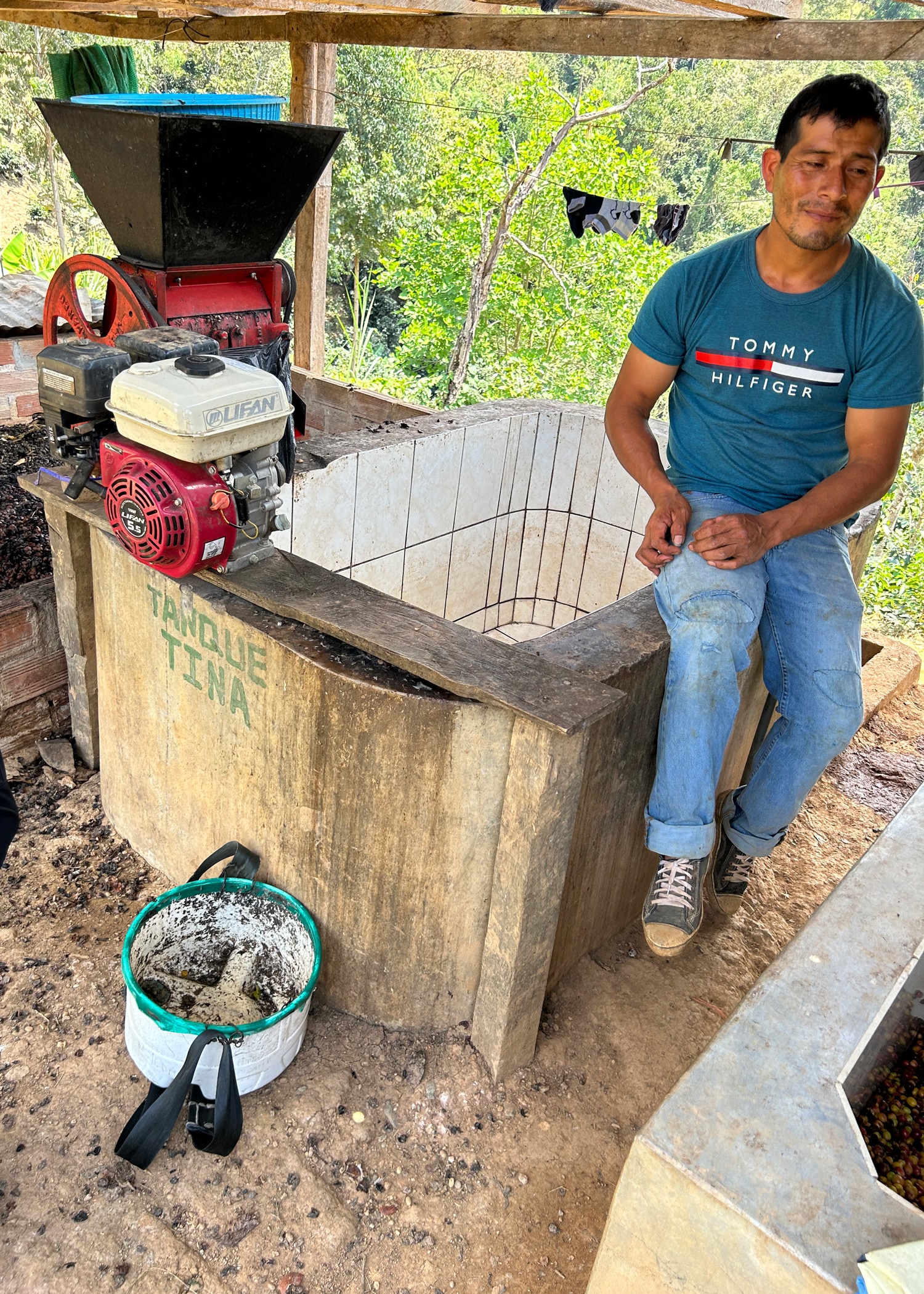
Johnny Sevada from San Ramon group talking about his processing.
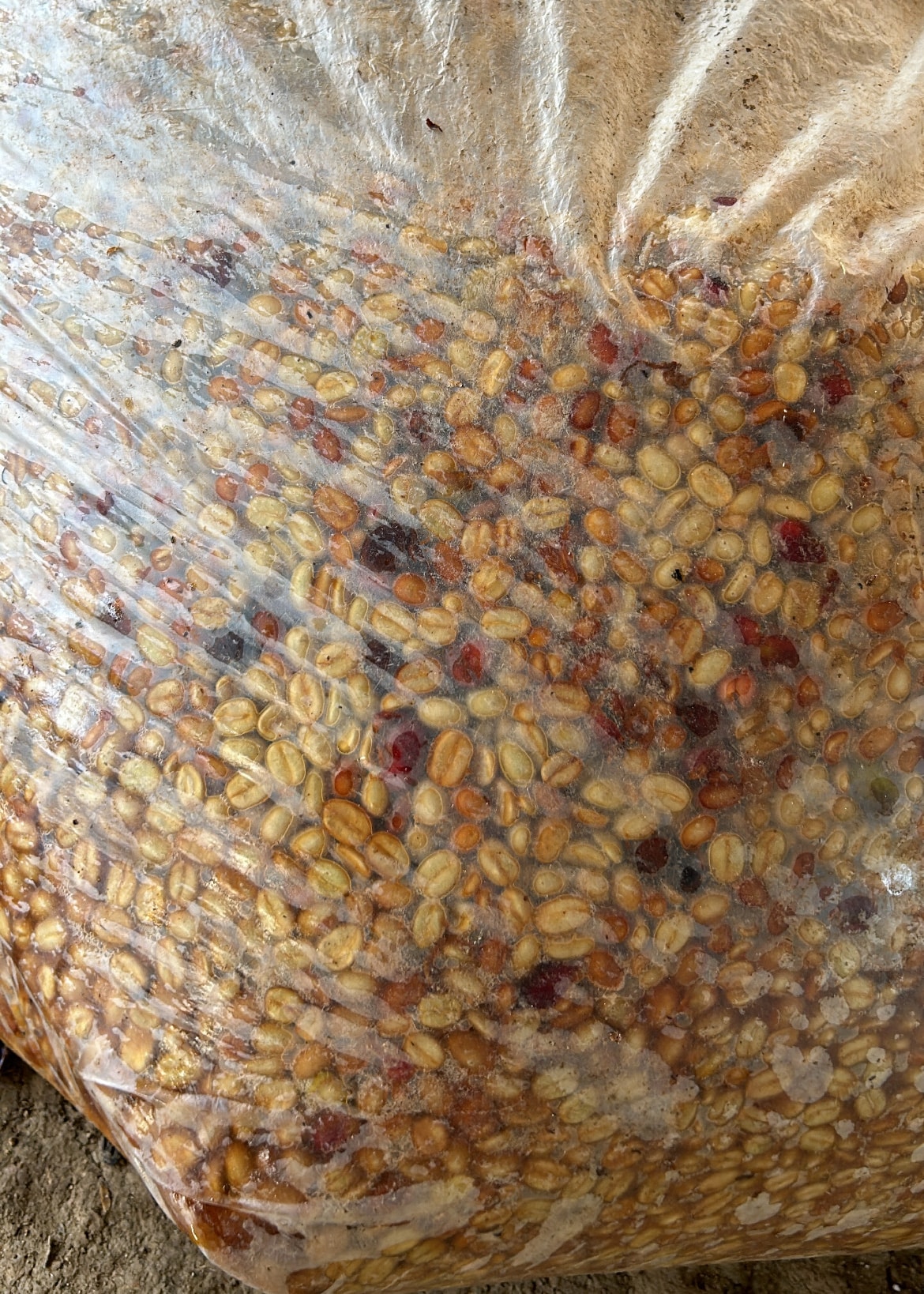
Pulped coffee seeds in an Ecotech-type bag during the fermentation phase of processing.
Origin Coffee Lab’s Purchasing Points
Farmers have much to gain working with an exporter like OCL. Pricing and payout were the biggest and most glaring differences I noticed. OCL strives for a 2-hour turnaround time between a producer dropping coffee off at their station and receiving a payment.
This process goes as follows: the farmer brings the lot of dried coffee seeds (beans) in parchment to OCL’s station in bags. There, OCL weighs the bags and gives producers the starting weight, which is also recorded. Then, OCL mills a 350-gram sample to remove the parchment and ready it for physical analysis, which removes defects. Then, OCL again weighs the sample to get an idea of what the general milling loss would be if OCL purchases the lot. Finally, a roaster at OCL sample roasts the coffee before it is cupped. The cupping process scores the coffee creates tasting notes.
OCL gives the tasting notes, score, and notes about the milling loss to the producer. Often, the existence of several defects causes a greater milling loss. This is not the last time these will be sample roasted or cupped, but this process then generates a payment offer and feedback for the producers.
Many producers bring their coffee to the better-paying purchasing stations like OCL even though they have other options closer to their farms. OCL gives them, in addition to this feedback, access to the specialty coffee market. The stations offer an amount for the lot the farmers bring and give them feedback showing how they arrived at the offer amount. The farmers choose to accept the offer or take their coffee elsewhere.
Benefits to producers who sell to OCL
From my observations, the producers usually accept OCL’s offer, but giving the producers this option and power gave them a noticeable sense of pride. The payment system is based on the milling loss (including the physical analysis) and the cup score. Once they accept the offer, OCL cuts them a check and the producer heads home or to the bank. I cannot speak to the full transparency of other purchasing stations, but I did not learn of many offering pricing that was quite as good. And again, access to the specialty market and buyers who are truly interested in investing in the producers and the work they are doing improves their lives and creates sustainability.
Additionally, OCL insists on farm visits and offers education on sustainability and farming practices, as well as cup quality training if the farmer expresses interest. Farmers also value the immediate payout by OCL. As an example, producers told me that Cenfrocafe, which is the largest specialty exporting entity in Northern Peru, was about 11 months behind on payouts.
So, while Cenfrocafe has the most access to market and many purchasing stations – both good things making it easier for producers – they don’t seem to have the cash flow to pay the farmers on the delivery of coffee. They assured me it gets paid out, but just much later than the delivery. For farmers, having cash in hand means easier investment for the next harvest or for whatever their immediate needs may be.
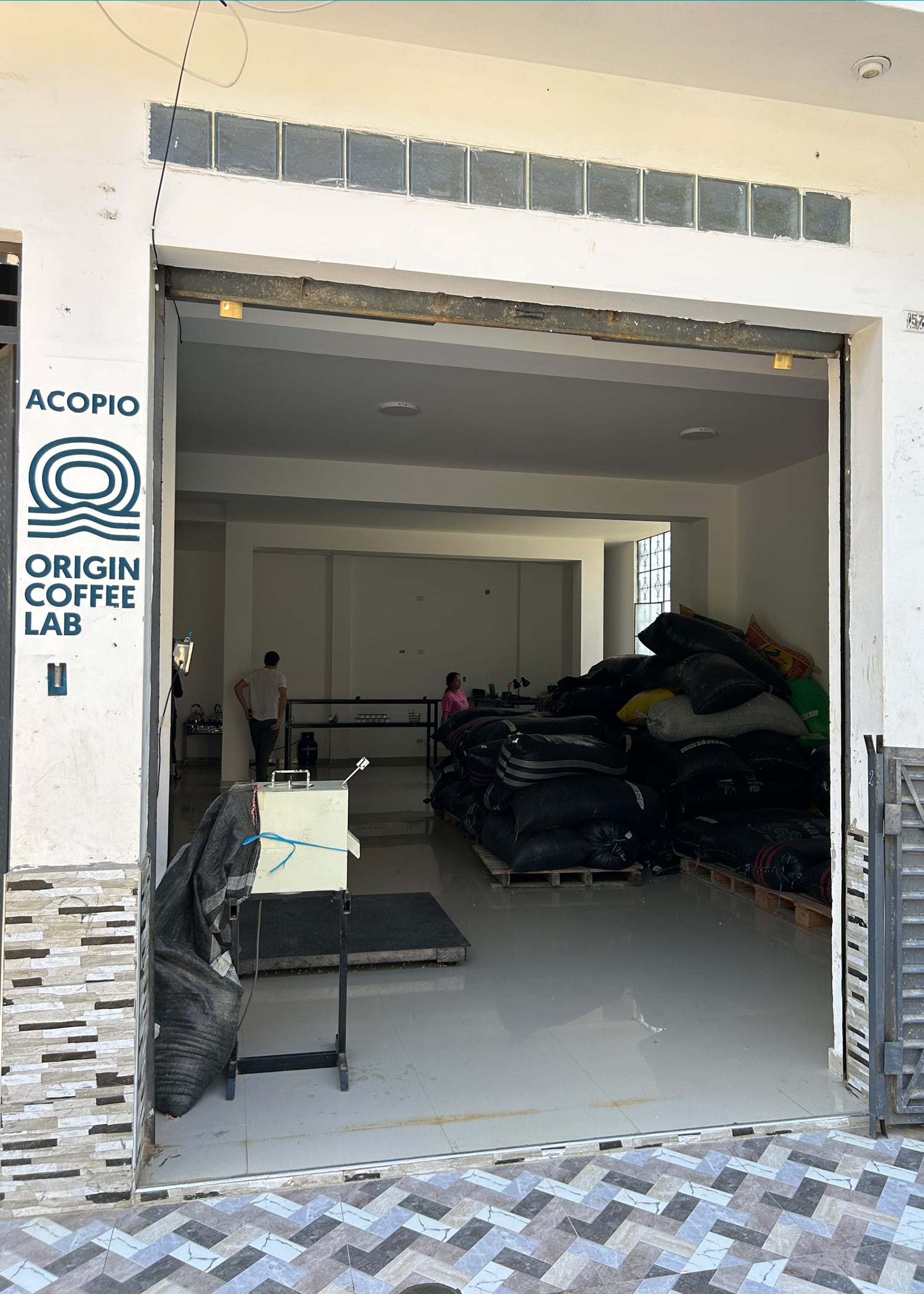
The arrival door for the OCL lab where farmers will drop off coffee they’d like to sell.
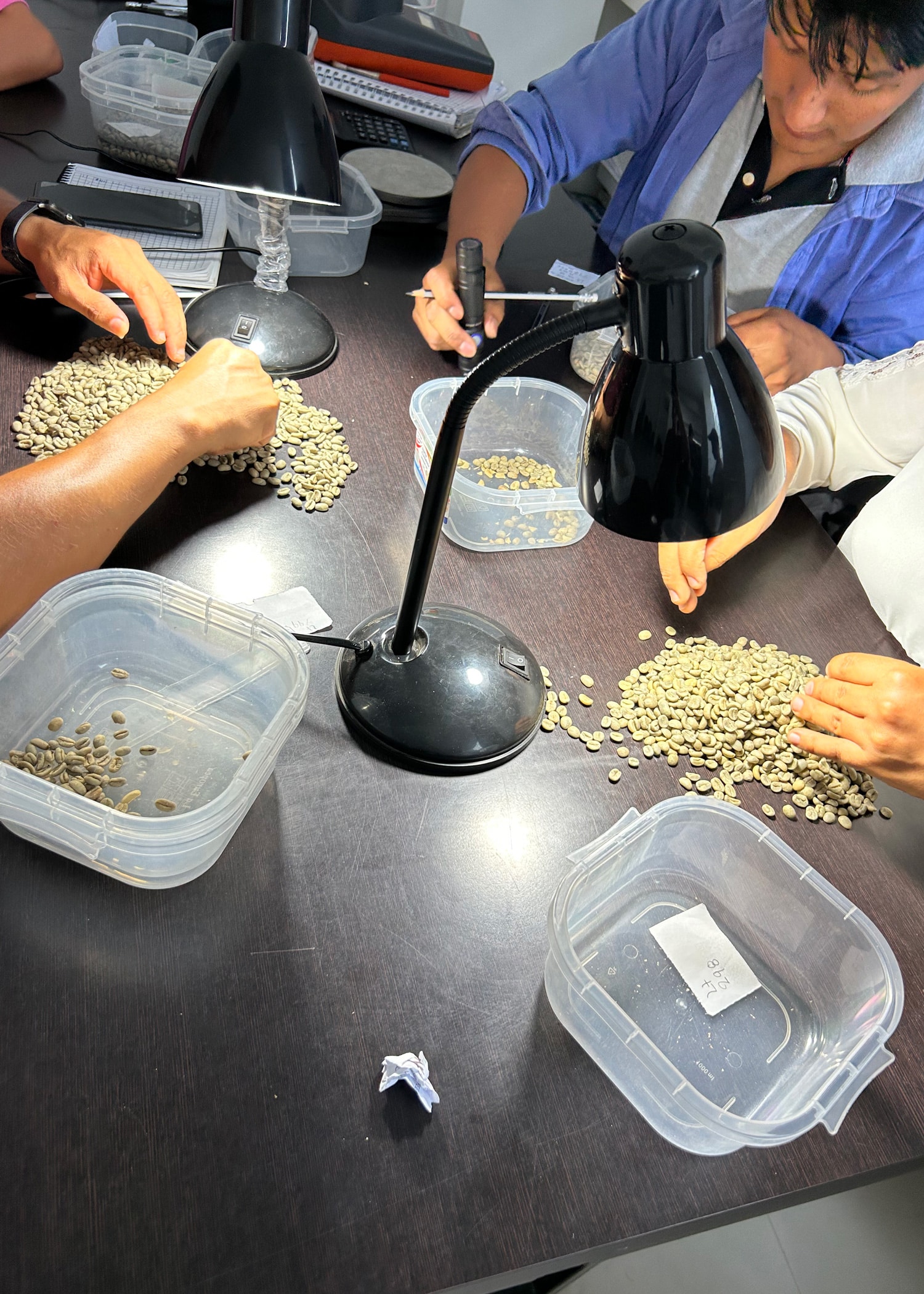
OCL team doing physical analysis of a potential lot of coffee.
The younger-generation of farmers
Younger producers seem to be asking some of the right questions and really want to know about new ideas. These young farmers in Peru seek open communication with roasters, like Blueprint Coffee, and consumers. They are open to the suggestions and ideas of foreign buyers. This is good, but it seemed they lacked a full understanding of the importance of the roles the exporter and importer both play in the buying process. That said, I had a really insightful conversation with a producer couple about what is important for the buyer. Additionally, what I, as a buyer, would like to see from them if they were to partner with Blueprint. They are actively looking on websites and seeing coffee prices for either their coffee or coffees from Peru. The pricing creates questions aboutwhere the money goes or how the roaster formulated the selling price. We see this direct communication with the producer, using the exporter and importer as experts in logistics and finance, as a critical component to sustainable purchases.
In more direct relationship like this, the exporters and importers often take a bare minimum amount for their services. This is because they don’t incur the risk they normally would when purchasing coffee without a committed or contracted end buyer. With this model, we can ensure the producers get the highest price possible for their coffee. This type of direct communication with producers helps us come to an agreement on pricing, quantity, and quality. It also gives the producer control over what their coffee is worth. We need producers to come to the table like this. In turn, producers need more buyers who aren’t afraid to enter into these conversations and risks.
The older generation
I observed that the older generation of producers do business more traditionally. This makes it hard for them to enact changes that may benefit their farms and the quality and yield of their coffees. While I visited Peru, one farmer received feedback on his farm from OCL regarding spacing considerations. These changes when planting new plants would allow for full airflow, sun exposure, and soil benefits. The producer seemed very eager to take that in. This same producer then also received feedback about how to dry his coffee differently. He respectfully listened, but essentially replied that he could not promise to make those changes. This seemed partially due to stubbornness, but mostly due to a lack of patience and mistrust in the feedback.
So, gaining the trust of the producer becomes important in the partnership, as in any. Making these changes, like planting with better spacing, improving drying methods, and seeing the increased yield from that is what builds that trust over time. The changes take patience and often mean taking a huge leap of trust.
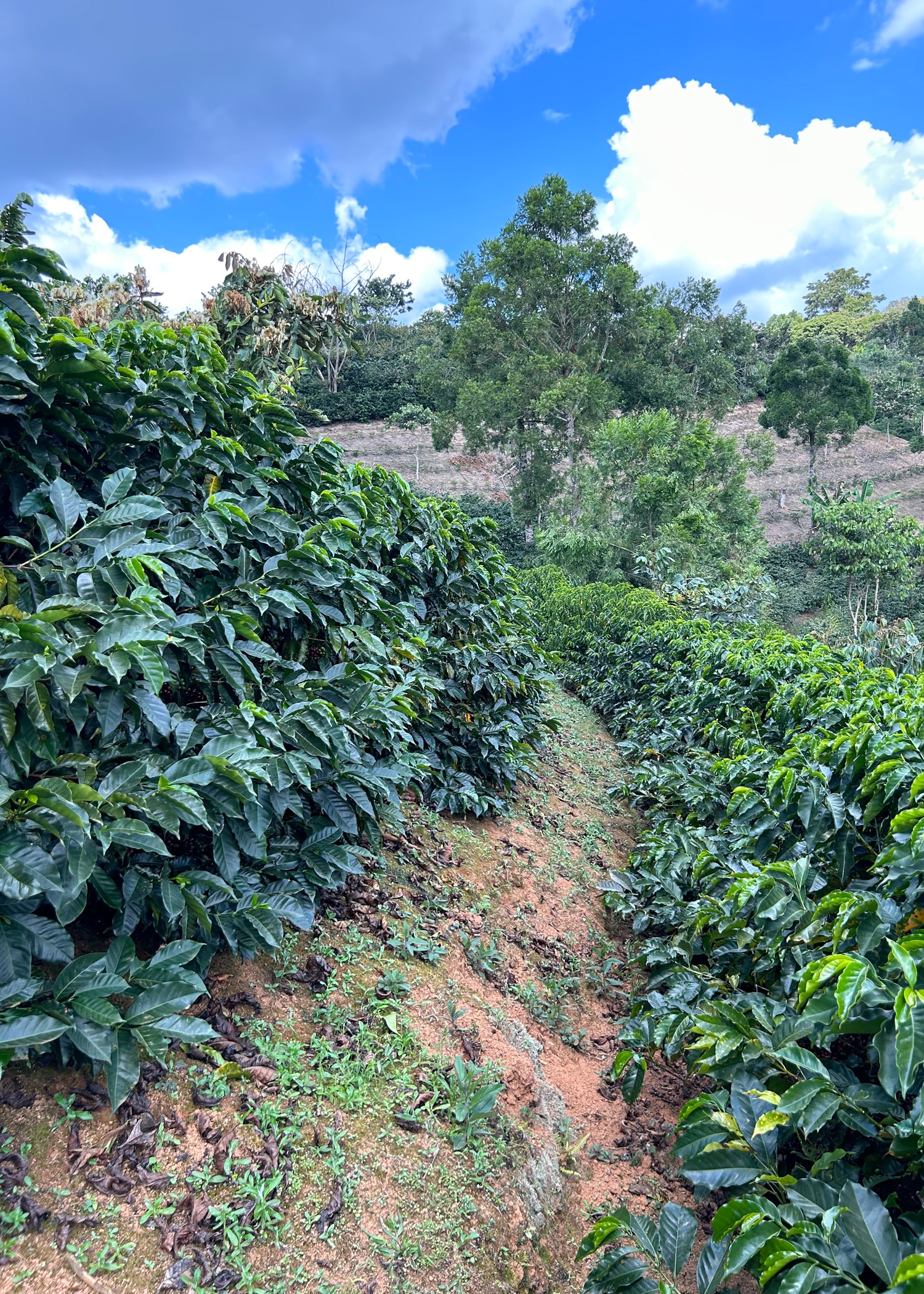
An example of ideal spacing between rows of coffee according to OCL.
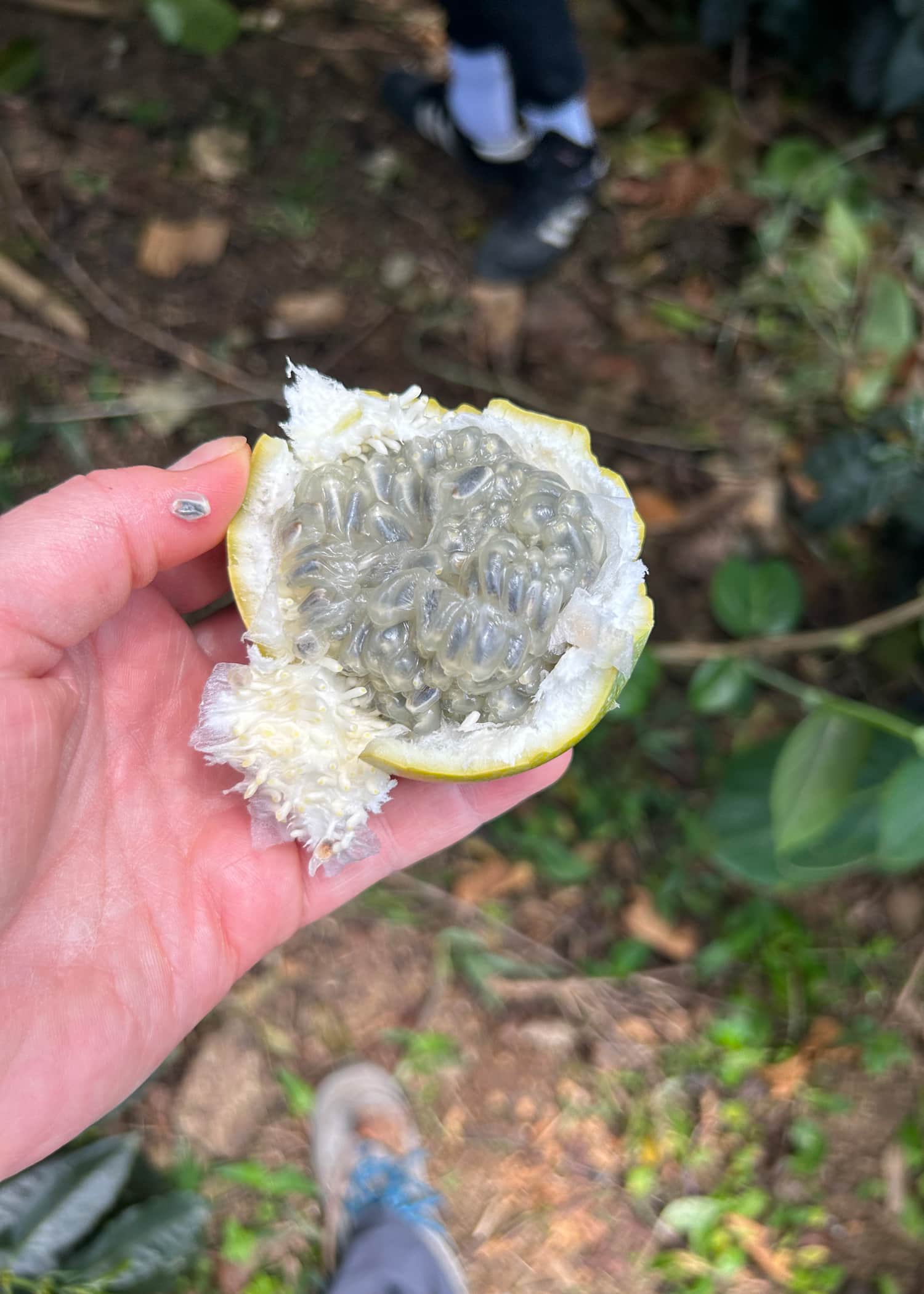
Granadilla, pictured here, is closely related to the passion fruit. It is an ideal additional crop for coffee farmers to grow.
Obstacles for Peruvian producers
My general observation on the trip was that while Peru was similar in production model to Colombia, it is still several years behind Colombia’s market due to infrastructure, market access, and farmer resources. Hopefully with investments from companies like OCL, as well as roasters and importers around the world, Peru’s reputation can improve while simultaneously looking to other origins for practices to consider and/or avoid.
Not only is OCL educating producers on better drying and planting practices, but also on diversity of crops and varieties. Varieties that sell for a high price tempt producers into growing solely that variety, like Gesha. Unfortunately, acting on this impulse often further depletes the soil and works against sustainability. Maybe more pressingly, it limits their sellable crops and amount of buyers. Further, if there is a pest or coffee leaf rust infestation, a diverse selection of varieties protects them from having their entire harvest affected.
OCL suggests farmers grow a diversity of crops and sell to a multitude of markets. Putting their agronomy knowledge into play, they suggest producers raise a wider range of crops to increase profitability and maintain soil health. Even livestock, which are a source of food and potential profit, offer positive impacts to soil health. Granadilla is a fruit closely related to the passion fruit but with much more sweetness and texture. These grow on vines and help provide shade. Global warming increases the heat and intensity of the sun, making shade more important to coffee growing. So, not only does this diversity improve coffee health, but the granadilla fruits sell well as a popular and desired food throughout Peru.
The effect of climate change is already present
This current harvest already suffers from global warming. Coffee plants that still had some very good cherry potential on them were going into hibernation early. As a response, farmers were stripping off any remaining fruit. Unfortunately, the farmers cannot sell these unripe cherries. This limits production and reduces potential profits to individual farmers. Additionally, it plays into potential price spikes on the global market – a lose-lose-lose scenario in the relationship among producer, consumer, and planet. For Peruvian producers to become more sustainable and successful they need to better understand climate change and how to respond. This dilemma faces farmers worldwide.
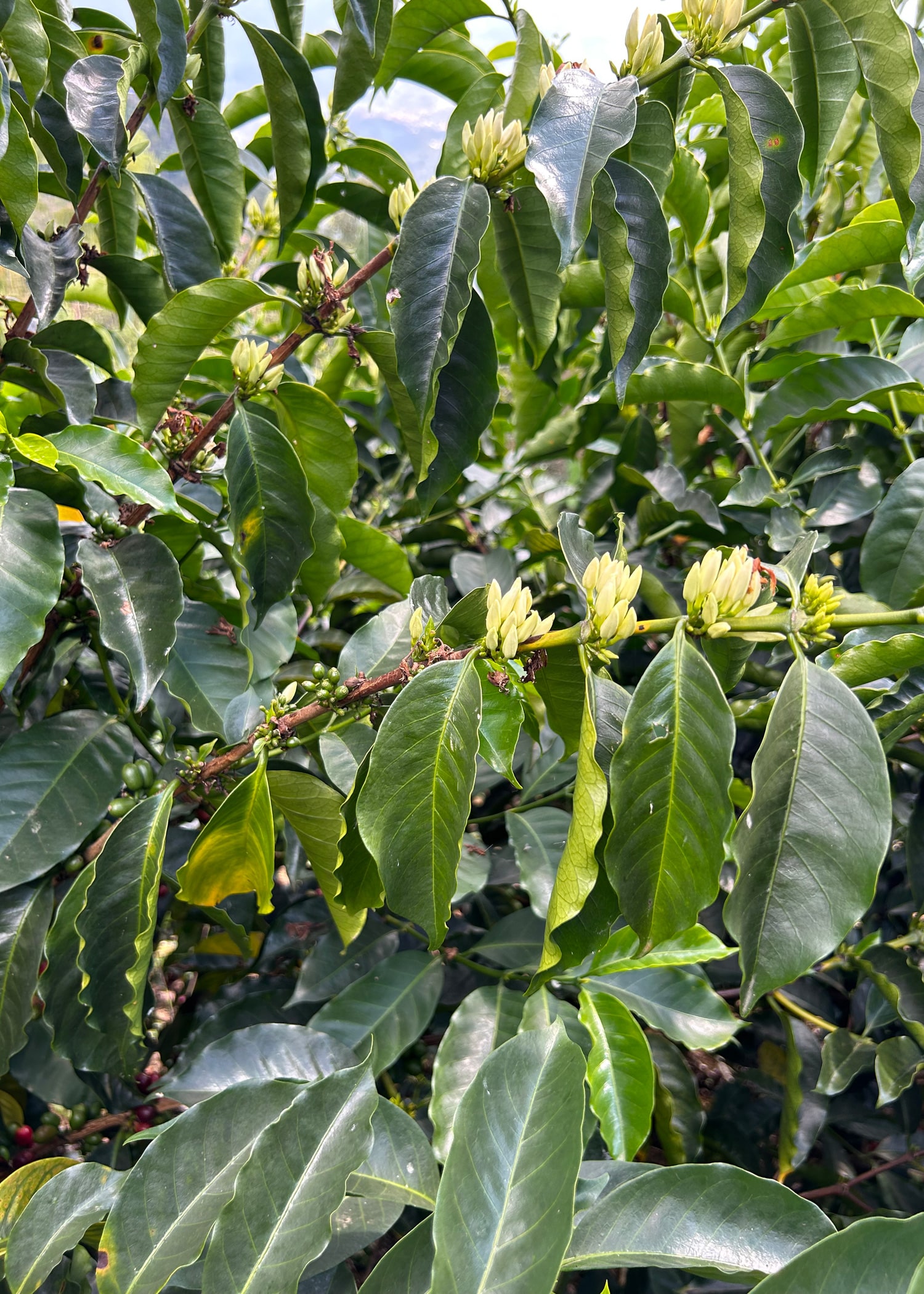
Global warming is affecting coffee growing in Peru – the leaves on a coffee plant shown here are starting to fold, indicating early-induced hibernation due to climate effects.
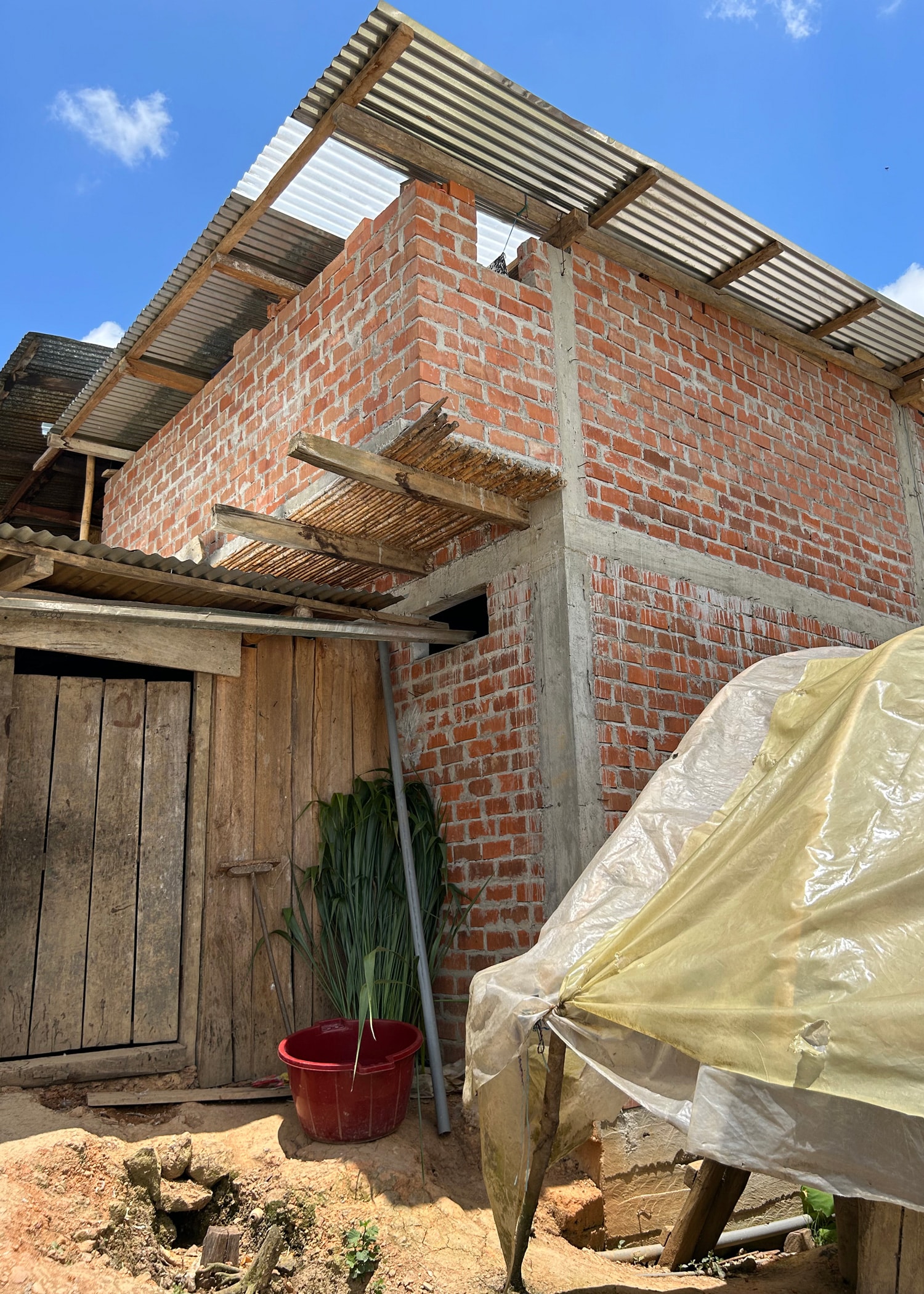
Due to increases in profit by accessing the specialty market through OCL, one farmer was able to build a kitchen addition onto his home.
Big-picture needs for Peruvian farmers
Farmers in Peru need more access to the specialty coffee market. The differences in quality of life for farmers in Peru who have access to the market was glaring. Out of the many farms I visited, several were proud to show off what access to the market has afforded them and the improvement of life they have. A few had built new kitchens or additions to their houses. Some had purchased motorcars (motorcycles with trailers), making it easier for them to do everything from accessing medical clinics to purchasing essential goods to, namely, bringing more coffee and other crops to market. Continuing to partner with farm-forward exporters like OCL does benefit the quality of life for producers.
Peru doesn’t have a national coffee institute or organization like many other coffee producing countries. So, allocation of funds for better infrastructure mostly goes to Peru’s capital city, Lima. New roads allow access for cars, trucks, and motorcars to get to the farms as opposed to hiking and using mules to move coffee parchment to roads that are further away. Roads and better infrastructure connect and breakdown separation allowing for more trusting partnerships to form, i.e. exporter and producer. Furthermore, funds for research and education into coffee production from the government don’t exist. An active and effective national coffee organization could influence national policy and funding for projects connecting farmers and the specialty market.
Coyotes
The dark side of limited infrastructure are coyotes – buyers who travel around to farms using cash in hand to persuade farmers to sell their coffee at prices that are much lower than the coffee’s worth. Often farmers are unaware of higher prices that purchasing points or exporters may pay. Often, this is because they are unable to deliver the coffee themselves. These coyotes then deliver the coffee to either a purchasing point or an exporter that they know will give them higher, specialty market prices. On one hand, this model presents as a service, like a producer/distributor relationship. Unfortunately, the coyotes prey upon ill-informed farms to maximize their profits. This cycle keeps farmers poor. This is why traceability is a value that any good coffee roaster should have at the forefront. Representing as many parties as possible that contribute to the production of coffee creates awareness, and hopefully value.
Ways for Blueprint to add value to the coffee economy in Peru
One small way I could see Blueprint Coffee directly aiding the Peru producer community would be inviting producers that sell to OCL to a presentation on specialty coffee in the US. It could help inform the group on the journey the coffee parchment takes after it leaves their possession. Explaining and breaking down ocean shipping costs, importing costs, and land storage and shipping costs would aid in bridging the gap between the price they receive for a coffee and the price we pay for their unroasted lots.
In addition, explaining our operational expenses, labor costs, the wholesale market, and reseller relationships would further help illustrate how we arrive at the price that we do for our coffee. This could all be very new knowledge for most if not all of them and help to give a more holistic understanding of how roasters and producers can partner together better to be the most mutually beneficial. Lastly, connecting the producer with the demands of the end consumer often creates solutions that neither would imagine on their own.
